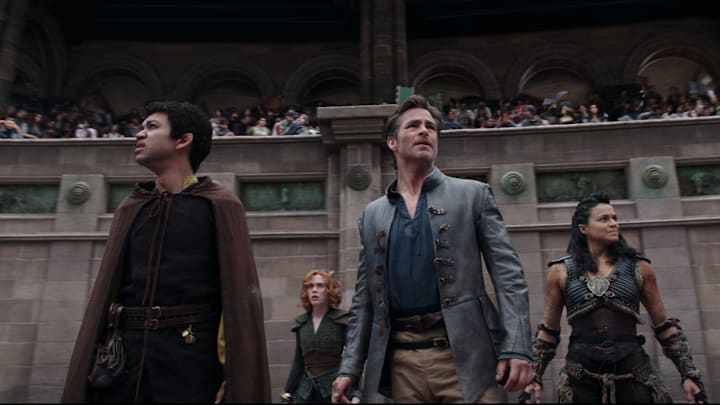So far, the various attempts at adapting the popular tabletop game, Dungeon and Dragons, into live-action movies have gone virtually nowhere. Their plots were lackluster, the characters forgettable, and the climaxes left much to the imagination. Most importantly, audiences weren’t all that impressed.

Delicious in Dungeon, conversely, gets to the nitty gritty of dungeon diving and the fun that comes with the adventure. Because, instead of acquiring sustenance from small amounts of bread and mead, the way D&D adventurers in the movies seem to do, the Delicious crew is realistic about traveling. They understand the costs of supplies aren’t within their budget, so they resort to the only thing D&D’ers fail to consider: monster meals.
Yes, it sounds yucky and no one imagines eating a hideous creature, but Delicious in Dungeon makes even giant scorpions and walking mushrooms look delicious. Senshi, the group's Dwarven cook, is an expert at making the most mundane look like a chef-inspired meal. Several fans have recreated the show's dishes, igniting a Dungeon Meshi craze; if you know, you know.
What makes the Netflix Original stand out is that, while the subplot is about making monster-infused dishes, it still covers every basis of Dungeons and Dragons—perhaps even better than any of the live-action films. Time to dive in.

The main crew comprised of Laois, Marcel, Chilchook, and Senshi focuses more heavily on slaying a dragon—the crux of beating a dungeon. Technically, it’s the Mage at the end that controls the realm but the figure most associated with governing is its crimson beast.
For Delicious in Dungeon, their objective stems from the desire to rescue Falin, and unsurprisingly, a dragon is responsible for her predicament. Technically, the group adventuring into the dungeon led themselves into danger, although they didn’t ask to be a dragon’s dinner. Regardless, the main characters take the loss in stride.
Another aspect of D&D well represented on the show is the utilization of each hero's particular sets of skills. The movies often depict the party of adventurers fumbling around, accidentally stopping their foes. Delicious in Dungeon, on the other hand, consistently emphasizes that each group member has their respective strengths and weaknesses. Using those skills correctly is also crucial to their survival.

In the first few episodes, Marcel grapples with feelings of uselessness because her abilities aren't needed for the immediate threat they face. She begins to project her emotions outward, making the fight all about her, until Laios pulls her aside. He takes Marcel aside to reiterate that they use their strengths strategically.
Basically, they fight the more physically imposing monsters so that Marcel can save her magic to fight entities that require a more delicate touch. The Undine was a perfect example of needing Marcel. It's a liquid-based monster that can shoot parts of its own body at enemies like deadly projectiles. Without a magic user to either restrain the Undine or blow it to bits, a party is guaranteed to fail. Marcel was crucial in defeating it, which reinforced Laios' perspective about utilizing the group's strengths properly.
Those are just a few examples of how Delicious in Dungeon does Dungeons and Dragons better than, well, the live-action adaptations of the tabletop game. More instances in the twenty-four episodes released thus far support this claim. That said, any D&D enthusiast would be wise to give the series a chance.
Delicious in Dungeon and Dungeons and Dragons: Honor Among Thieves are both streaming on Netflix.
